 Our visit to Lisbon swung between extremes. 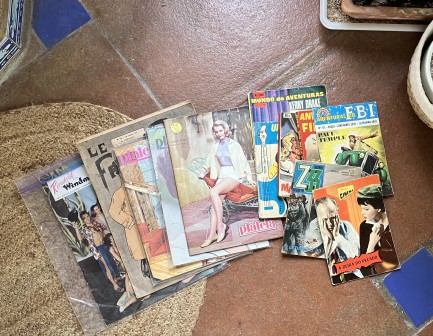
Some of you may be wondering whether we actually picked up anything for Pulp Intl. during our ballyhooed trip to Lisbon. We did, we just haven't had to time to sort and scan it yet. But above you see a snapshot of some items we bought at the city's twice-weekly Feria de Ladra, which apparently has been going on since 1272 (not a typo), and these days takes place at the Campo de Santa Clara, behind the important monastery of São Vicente de Fora. The market is a marvel. While it isn't anything close to Le Marché aux Puces de Saint-Ouen in Paris, it remains one of the better troves of vintage matter you'll find in Europe, and as a bonus is popular with beautiful women and supports a satellite industry of interesting bars and eateries. Among the items we found were old issues of the pop culture magazine Plateia, crime comics such as Secreto Agente Z33, and a copy of the movie mag Colecção Cinema. We'll be scanning and uploading those throughout the year, and they'll be nice reminders of a good trip. Well, mostly good.
When the Pulp Intl. girlfriends left, things went a bit haywire. We'll share only one episode: the panic inducing disappearance of one of our group, who had been done in by Lisbon's numerous hills as we searched for a music bar one night, and had headed home to rest with his left arm tingling (which he attributed to a pulled shoulder muscle he'd suffered after taking a spill on what we nicknamed the “heroin stairs”). We stayed at the bar and when we returned hours later he was nowhere to be seen. Frantic calls to his phone produced nothing. Calls to the hospitals ditto. Uh oh. We organized ourselves for a 4 a.m. search of the deserted barrio where the bar was. Our working theory: coronary, collapsed, rolled into a ditch, died. That hadn't happened. What had happened was he walked down the hills as planned, was near the apartment we'd rented, but got tractor beamed into a strip club where he spent 1,300 euros on lap dances. Under the circumstances, he'd heard none of our calls. Said he: “I felt better by the time I was passing the club.” Funny episode, but we think he's due for a medical check-up. The week that was, Pulp Intl. style. 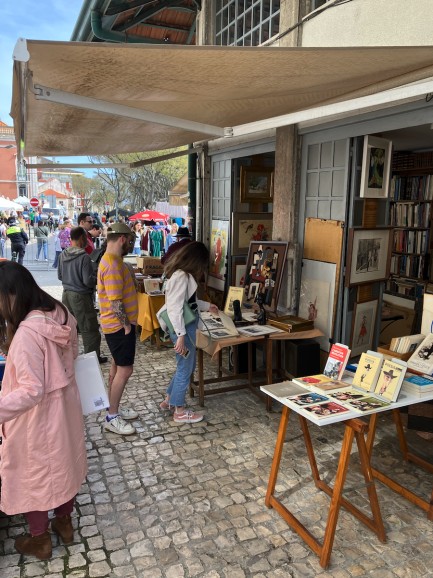  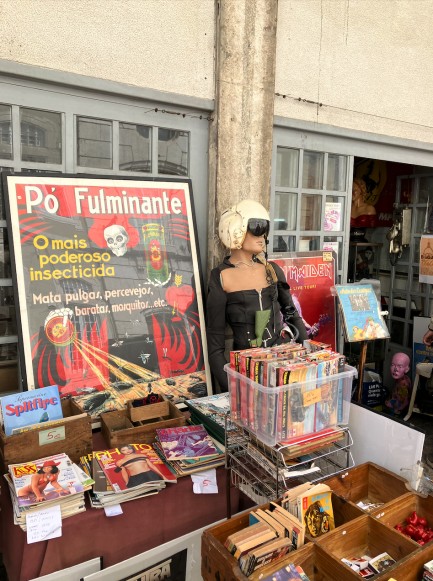 
 Pulp Intl. and friends abroad. What's the worst that can happen? 
It's intermission time. Yes, we just took a break, but it was unplanned due to our move and its many associated delays. The upcoming intermission has been planned for a while. We're going to stage a triple birthday celebration in Lisbon with some of our favorite globetrotters. The Pulp. Intl. girlfriends are coming too, but are bailing on day four. They say they want us to have boy time, but the truth is four days with this crowd is all they can endure.
Mixed into the days and nights (of sedate museum visits and early bedtimes, we swear, girls) will be serious pulp digging. We have no idea whether Portugal has such items, but we'll only learn the answer by looking. Hopefully we'll make it back home intact by March 16. That's the plan, anyway. But you know what they say about plans. To tide you over until our glorious return, let us direct you to some Pulp Intl. favorites. A small collection of paperback covers by George Gross. Fifteen covers of the pulp magazine Short Stories. Modern pulp art by the amazing Owen Smith. All our issues of the French art deco style magazine Paris Plaisirs. All our issues of the Australian men's adventure magazine Adam. Misty Ayers does her daily lingerie workout then cooks a meal. The paperback cover art of Bill Edwards. A look at historic cinemas from around world. Beautiful covers from the Italian publishers Edizioni MA-GA. All our write-ups on sexploitation queen Laura Gemser. And finally, below you'll find our inexhaustible tabloid index, which used to reside somewhere in 2018, but which we've moved in case anyone wants to check out all the scandal sheets we've written about.
 Wait, don't kill me! I can be useful! I can teach you this lindy hop I learned in my dance class! 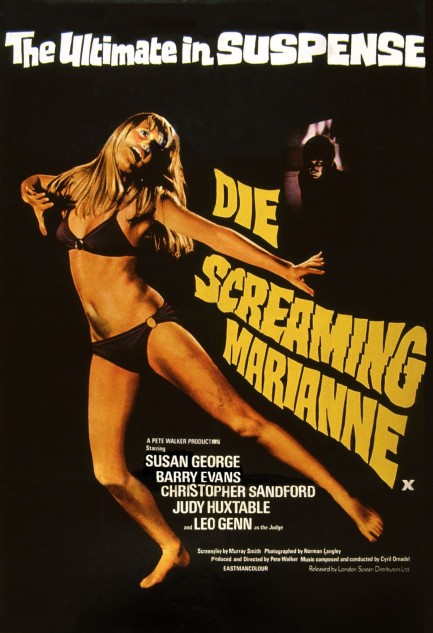
We said last week we'd get back to British actress Susan George. Above you see her on a poster for Die Screaming Marianne, along with the claim that the movie is the ultimate in suspense. Well, if that's the case, how could we say no? George plays a nightclub dancer hiding out from her father, a former judge who took bribes during his long career. He lives in a villa in Portugal with George's half sister. When George turns twenty-one she'll receive her mother's inheritance, which is in a Swiss bank account along with papers proving her father was a crook. Her half sister wants the money, which amounts to $700,000, and her father wants the documents. Both decide that killing George is the only way to achieve their goals.
The filmmakers, including cult horror director Pete Walker, primarily come at all this via a somewhat elliptical route that brings to mind giallo cinema, where you aren't sure what's significant, or really what's even going on at first. But by halfway through, it all begins to make sense and the story boils down to the very conventional question of whether George's father and half sister can get away with murder. We won't answer that, but we'll tell you we can't fully recommend the movie because of its obtrusively oddball style. George definitely made better films, a few of which we mentioned in our previous post on her. That being the case, we'll see her again. Die Screaming Marianne premiered today in 1971.
 Ciné-Revue was the go-to publication for movie stars seeking exposure. 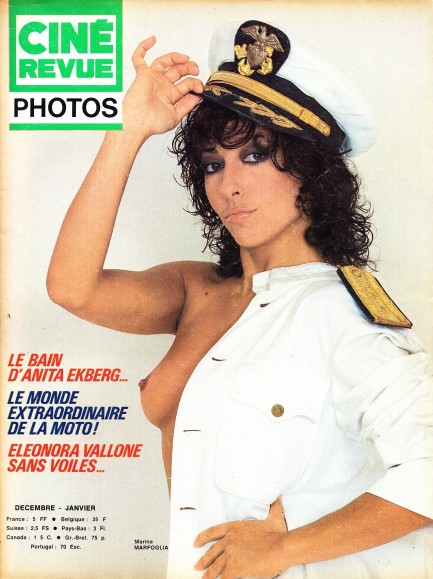
Here's your official Christmas gift, a prime example of that mid-century phenomenon we discuss often, the intersection of mainstream and adult cinema during the sixties and seventies. Ciné-Revue, which was published in Belgium and distributed there and in France, Switzerland, Canada, Portugal, Britain, and the Basque region of Spain, was at the vanguard of that idea. It highlighted both popular stars and their adult counterparts, blurring the line between the two. It wasn't hard to do. Famous performers often acted in sexually oriented films, and Ciné-Revue was a platform that helped cinematic explorations of sexual ideas be taken seriously.
The issue you see above is the cover of Ciné-Revue Photos 49, a visual compendium of actresses both world famous and somewhat obscure. The names run the gamut from Anita Ekberg to Marina Marfoglia. Marfoglia gets the cover, while Ekberg gets the rear, and that's exactly what we're talking about—the obscure elevated over the known. Both are also featured in multiple pages inside—but while Ekberg gets seven, Marfoglia gets eight and the centerfold. The issue is about a hundred pages, but we're unable to put together a post that long. Instead, we've selected some of the nicer images to warm up this winter day. Enjoy, and don't worry about us slaving over a computer. We put this collection together last week. Right now, on Christmas, we're traveling with the PIs.
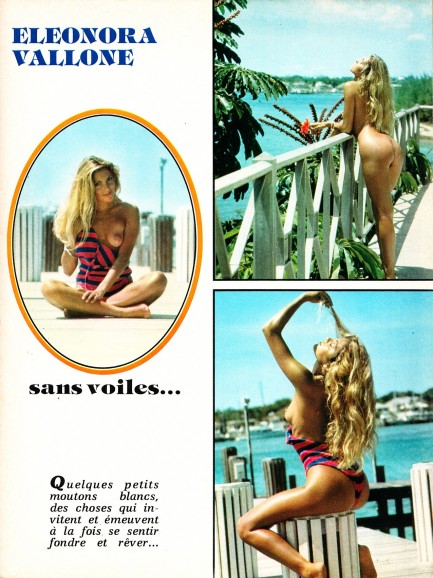 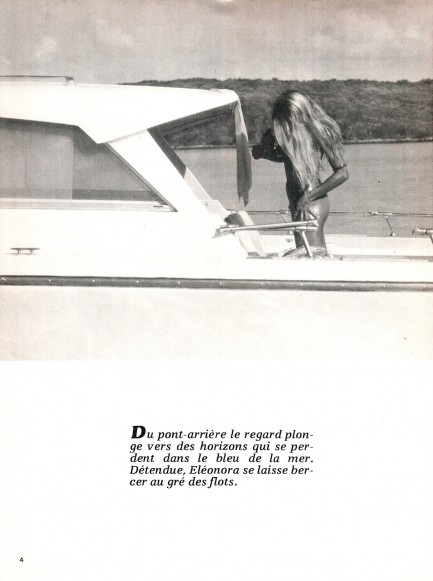  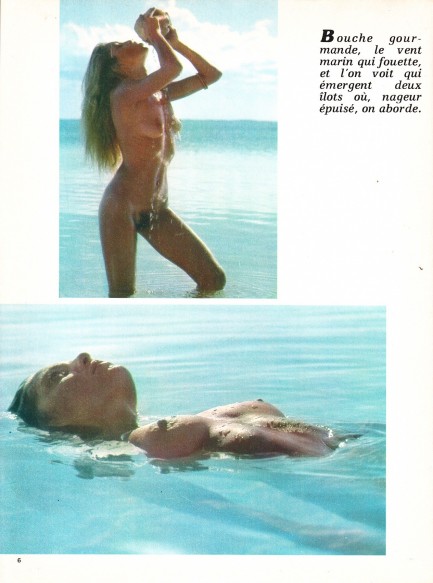 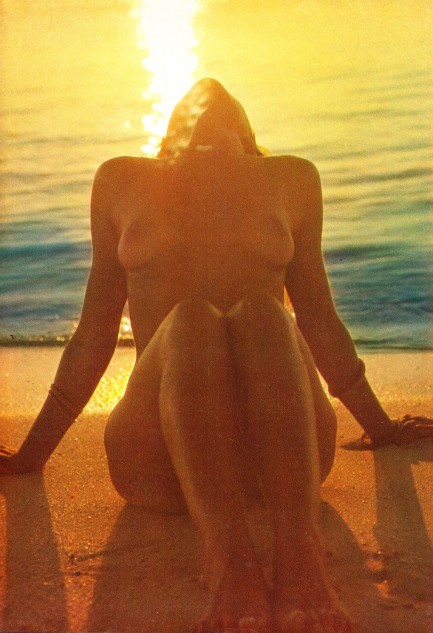 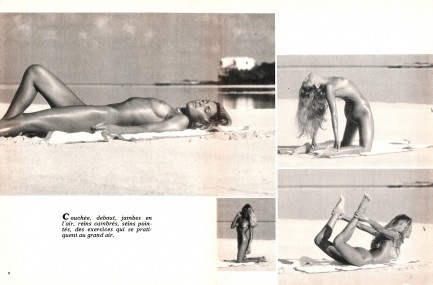 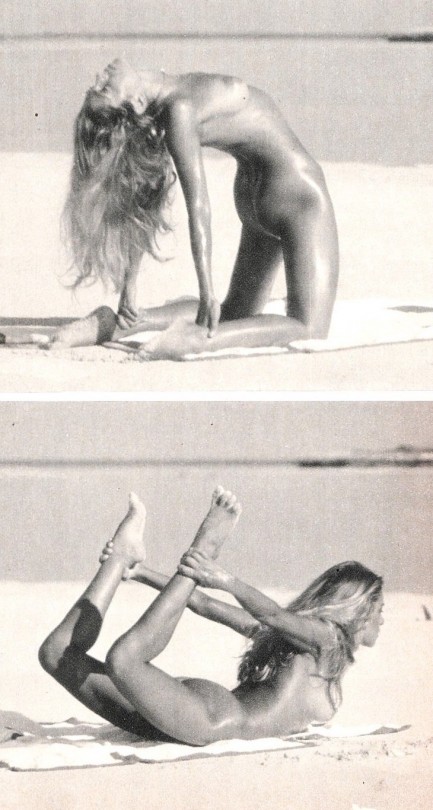 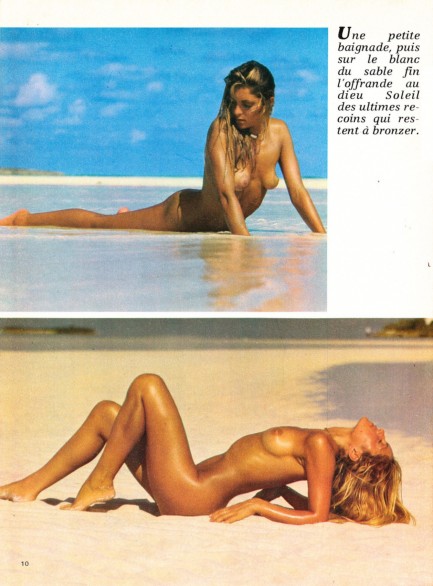 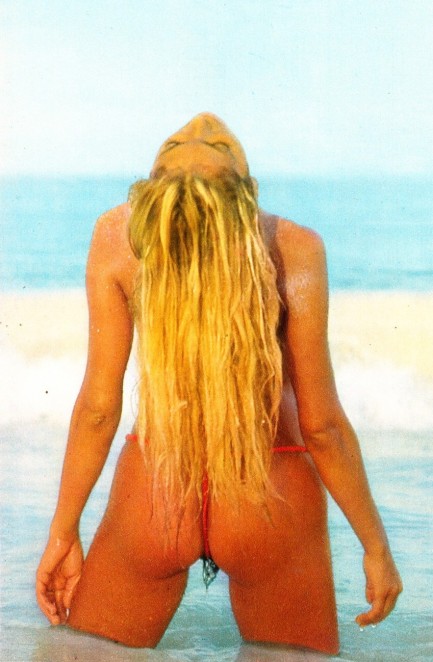 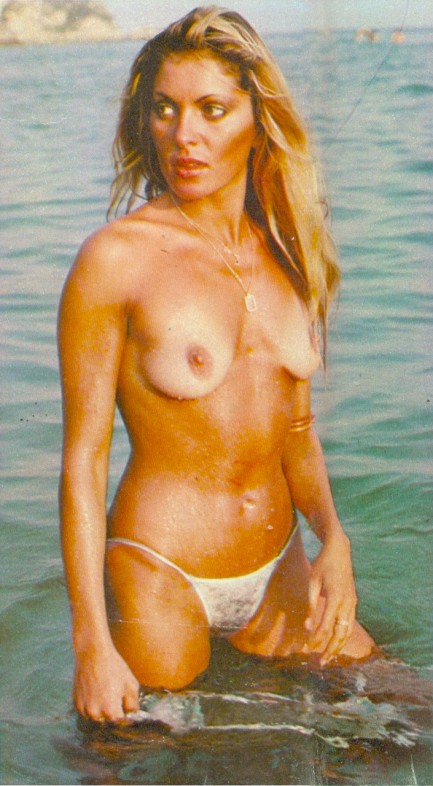 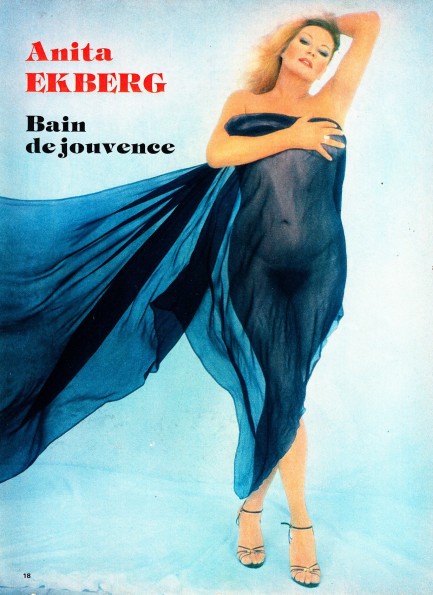 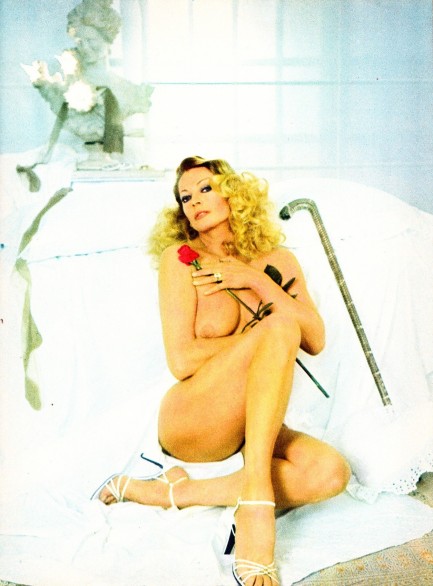 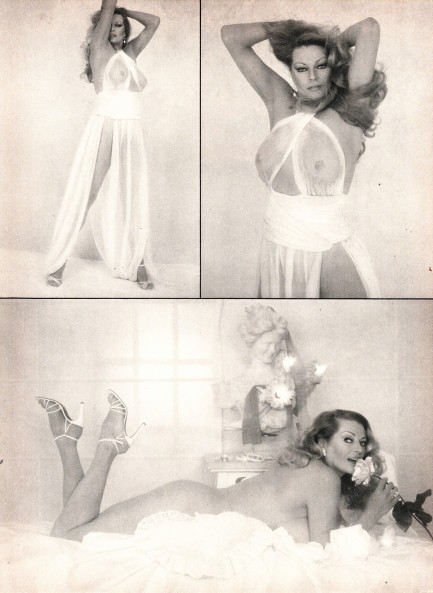 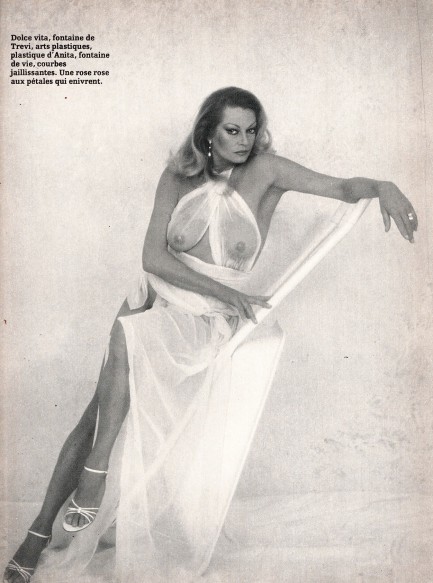 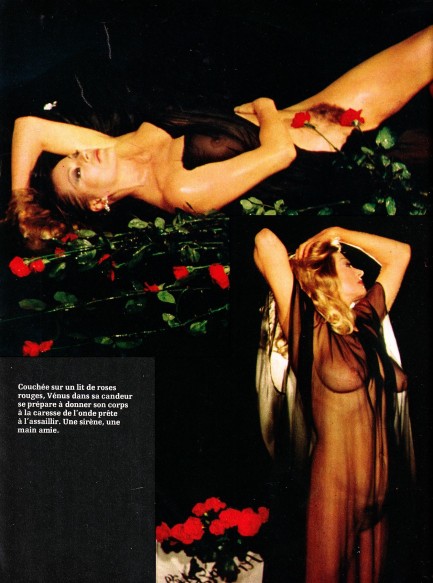 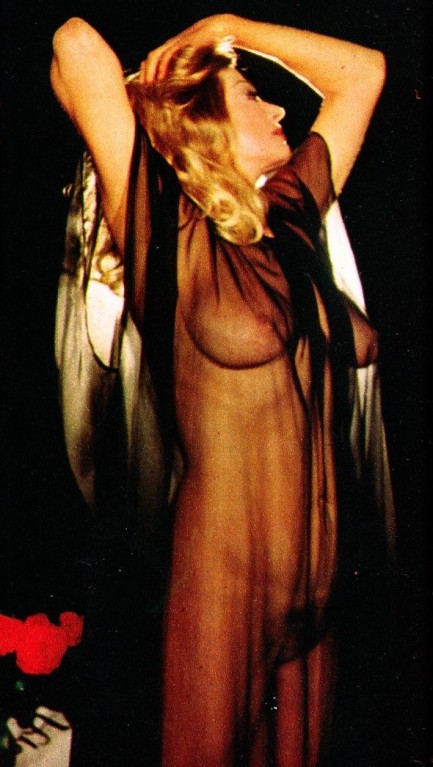 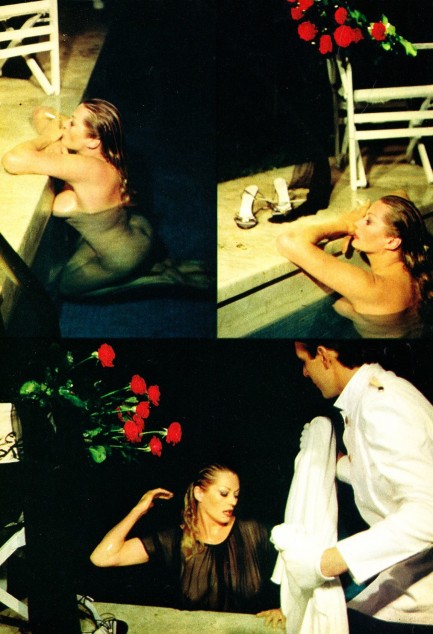 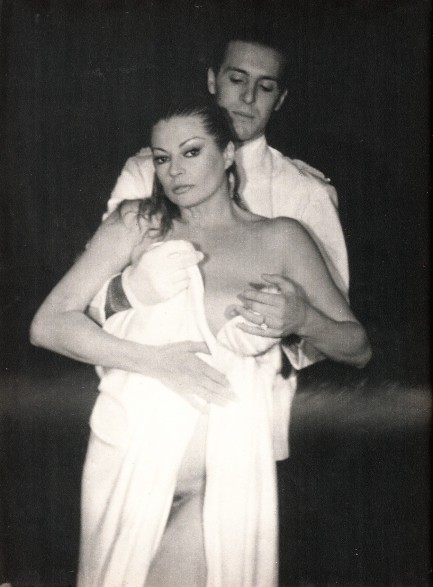 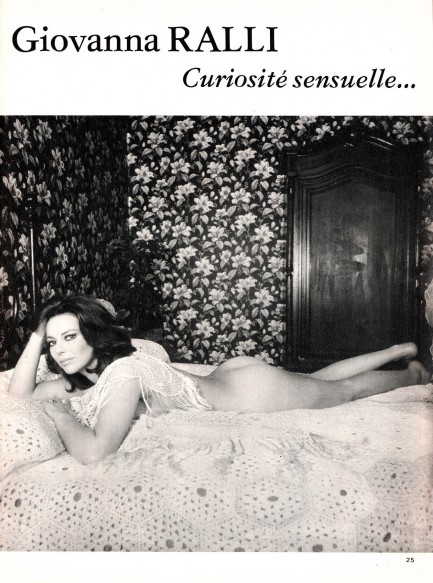 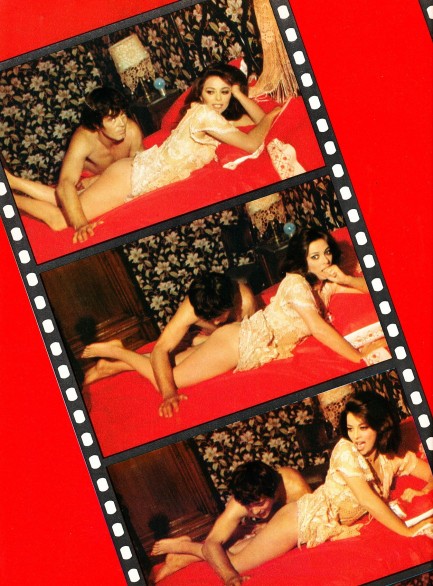 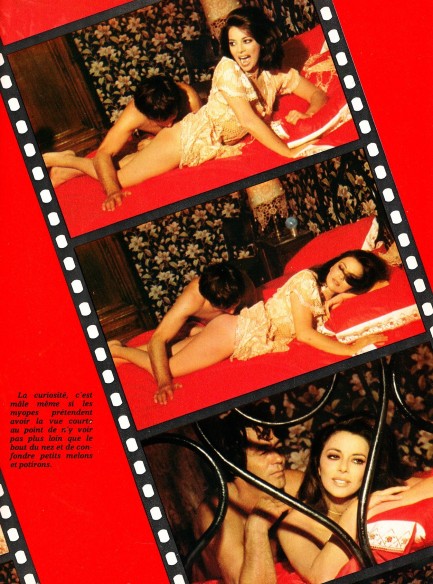 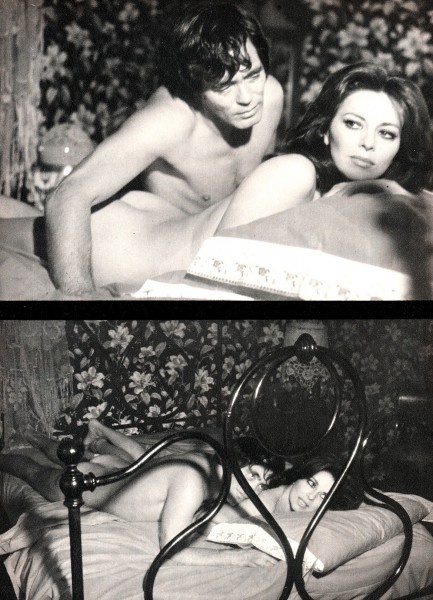 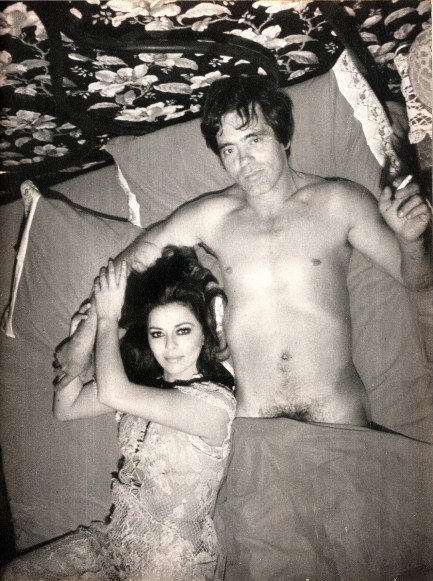 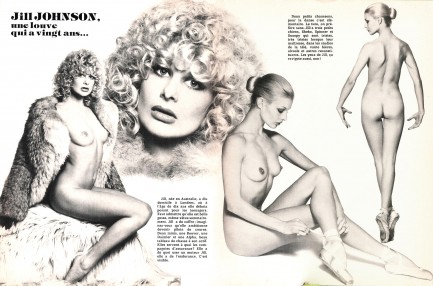 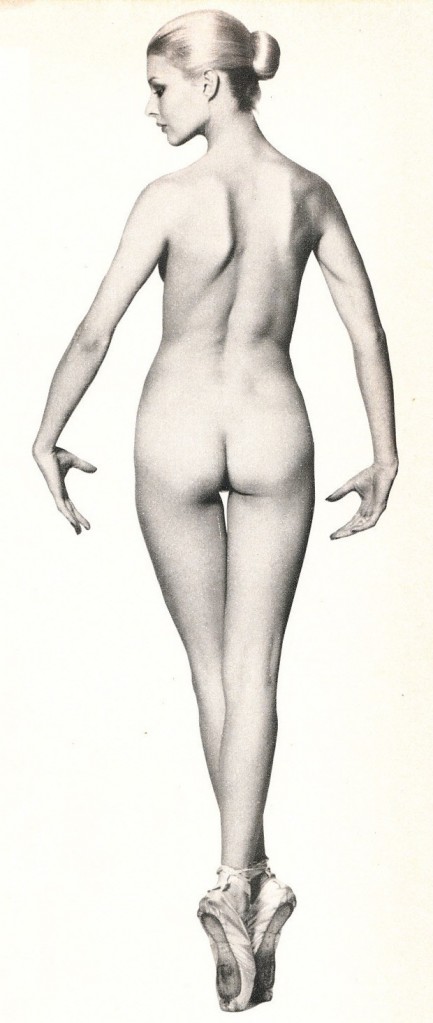 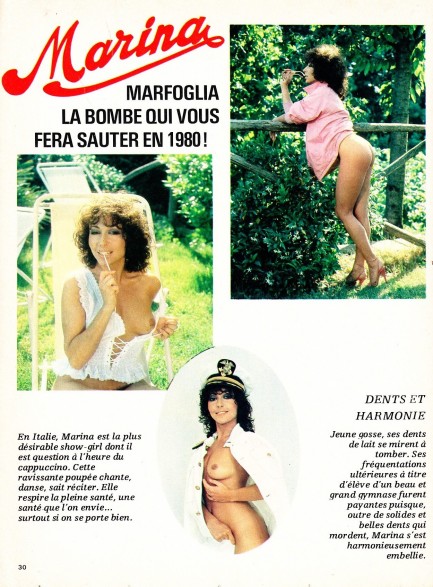  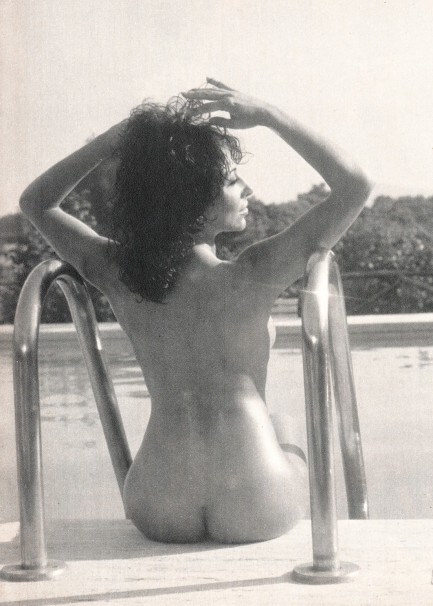 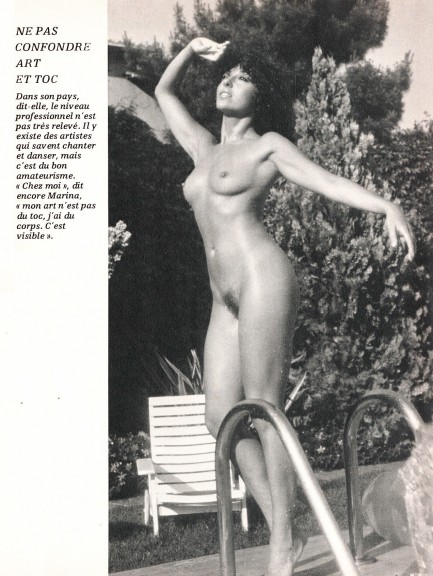 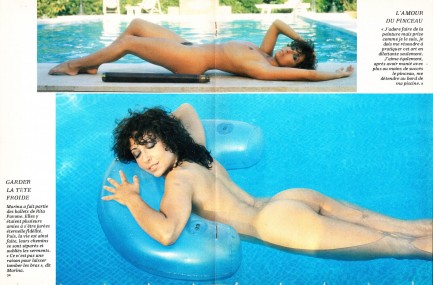 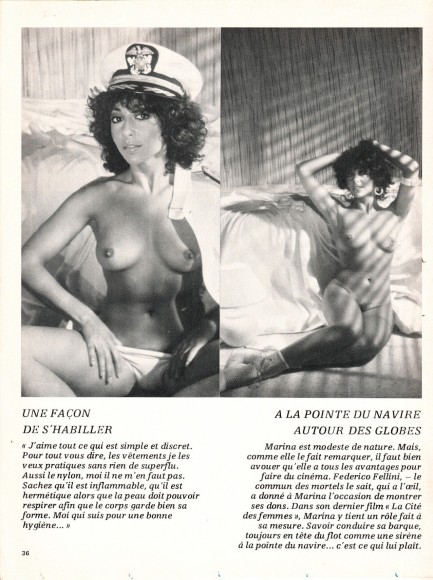 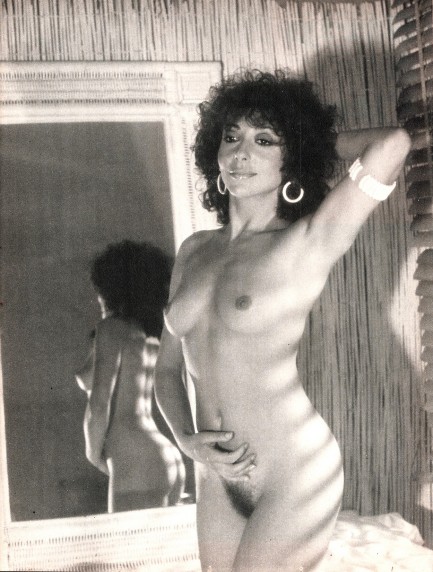 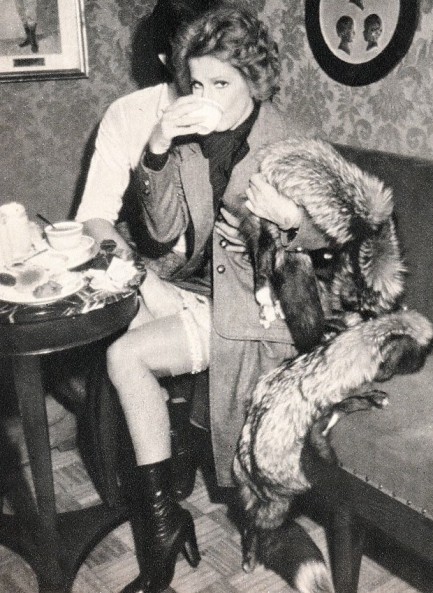 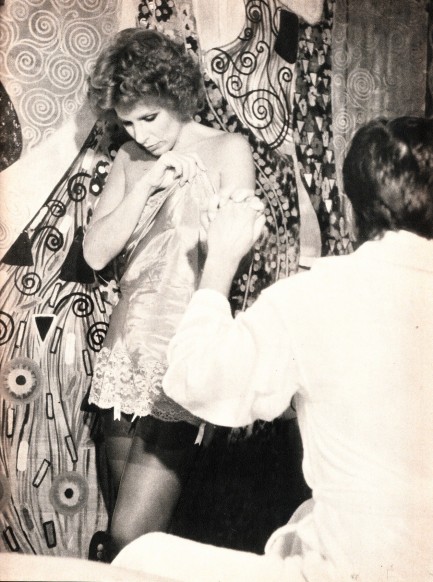 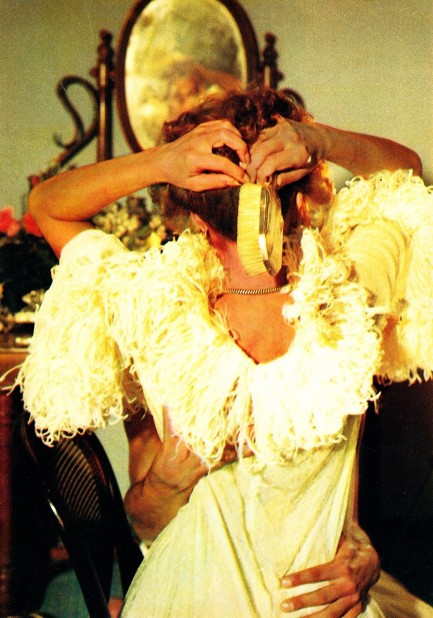 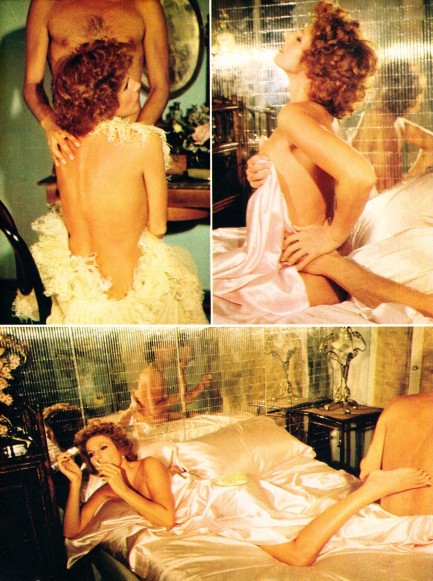 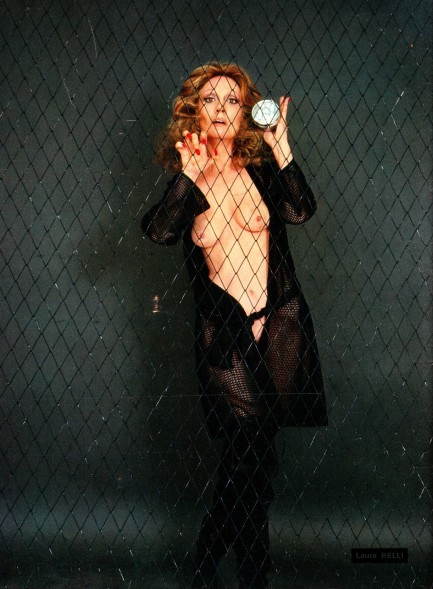 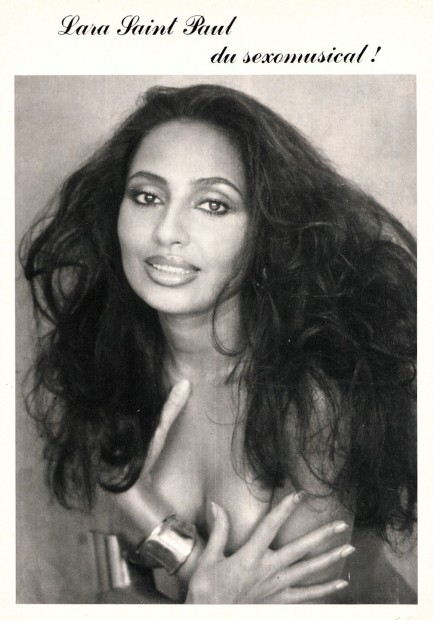 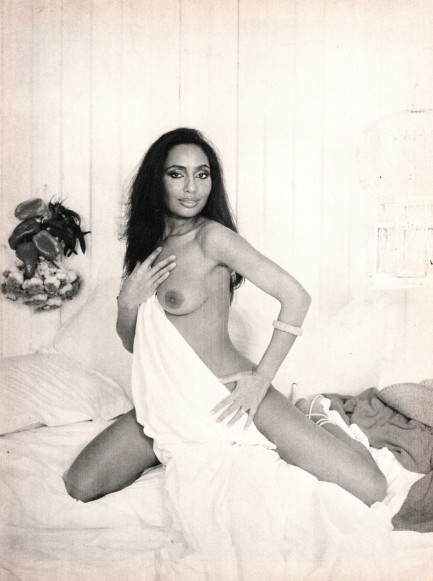  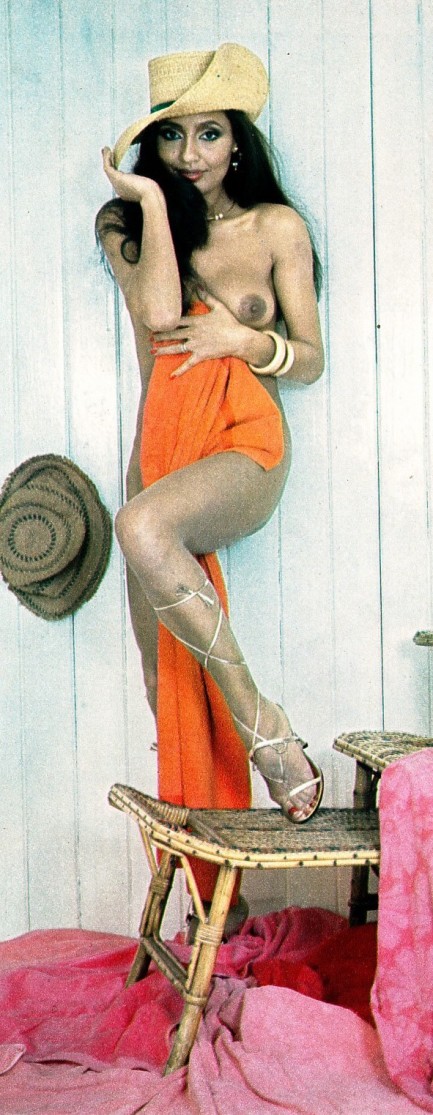 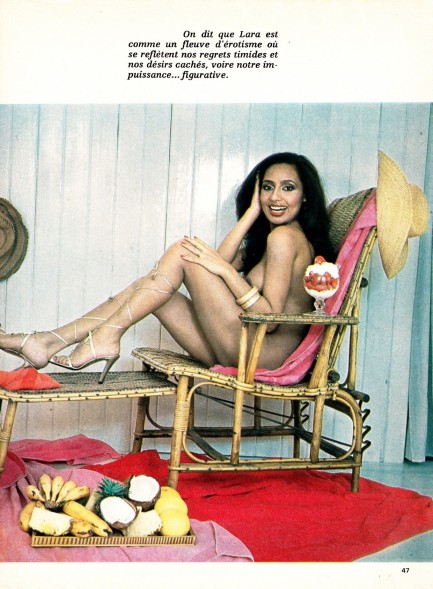 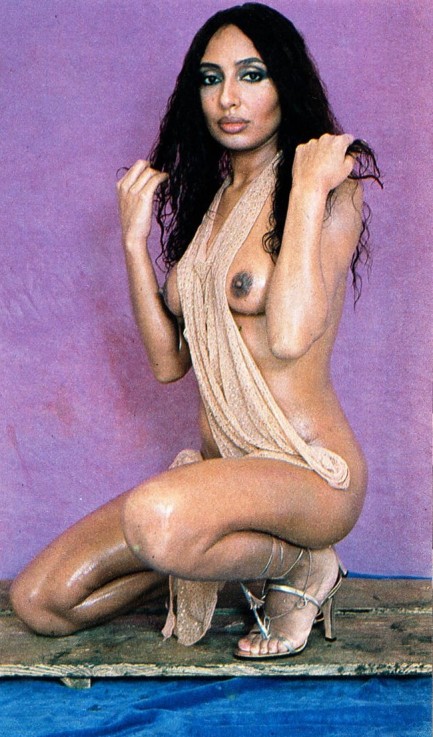   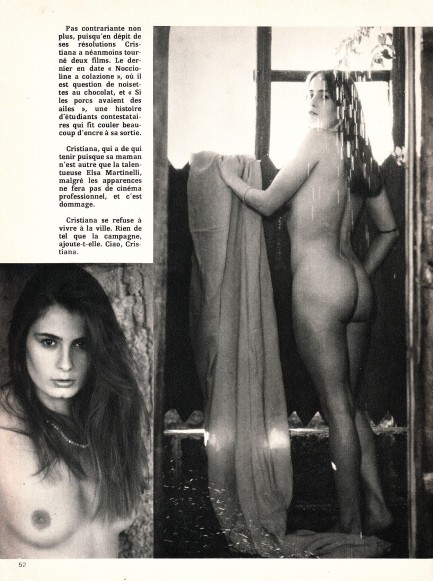 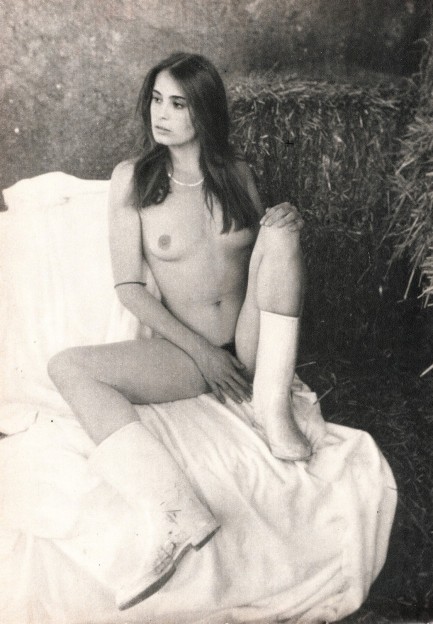 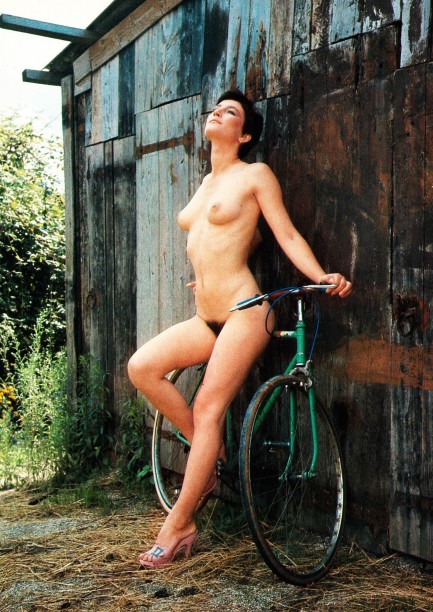 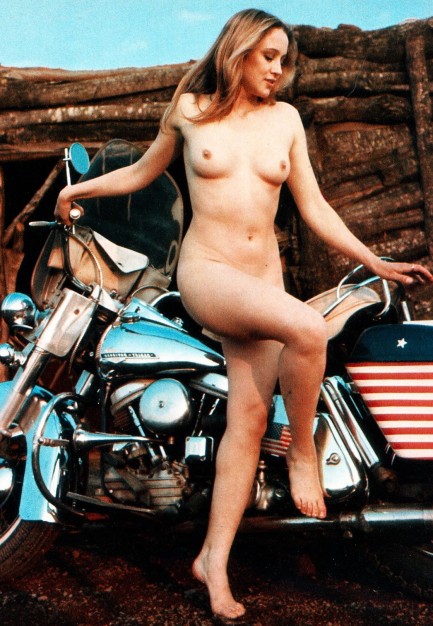 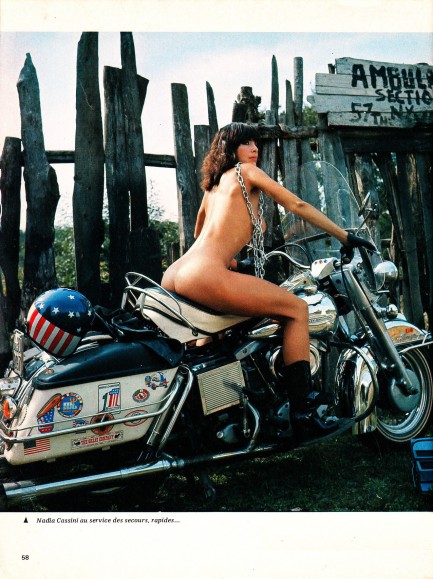  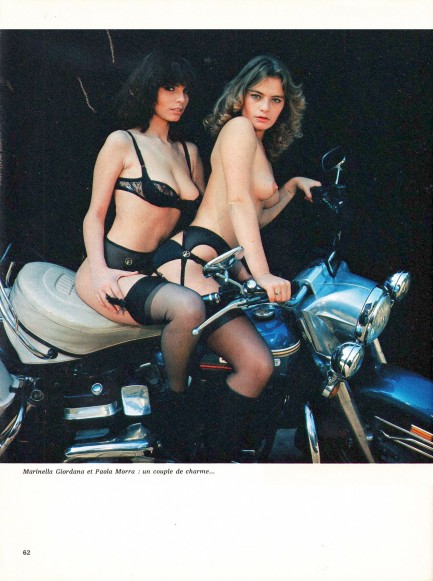  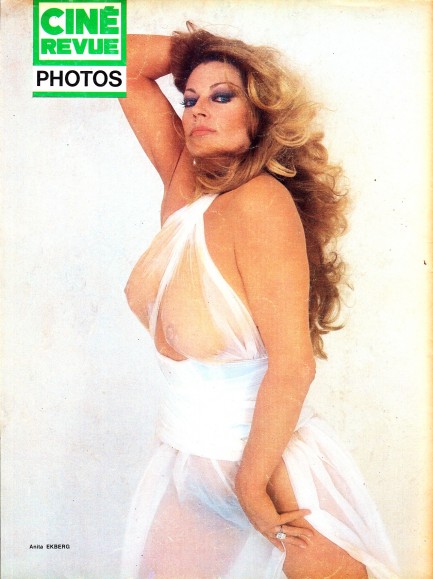
 Bang bang, lovelies—there's a fab new sheriff in town. 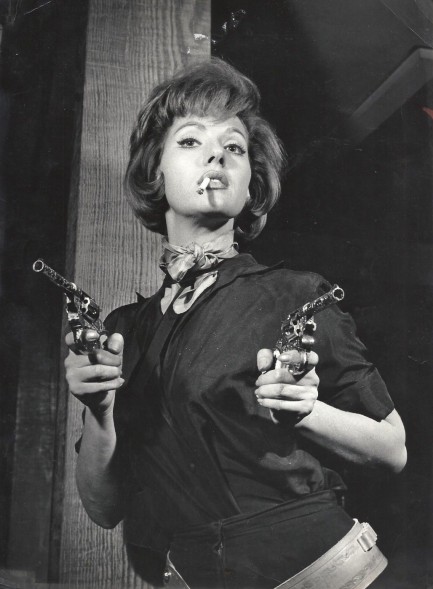
Helga Liné's last name has an accent, which means it's pronounced not “line” but “lee-nay.” She was born in Germany as Helga Stern in 1932, but her family fled nazism and she grew up in Portugal, where her first exposure to show business was as a dancer and circus acrobat. It was after moving to Spain in 1960 that her film career took off. She appeared in many giallo, spaghetti western, and horror films, among them All'ombra di una colt, aka In a Colt's Shadow, Pánico en el Transiberiano, aka Horror Express, and Amanti d’Oltretomba, aka Nightmare Castle. The promo above is not one we can identify as from a particular film, but we do know the date—it was part of a session that produced a cover for the Spanish magazine Dígame in July 1965.
 It's a tough job but some tabloid has to do it. 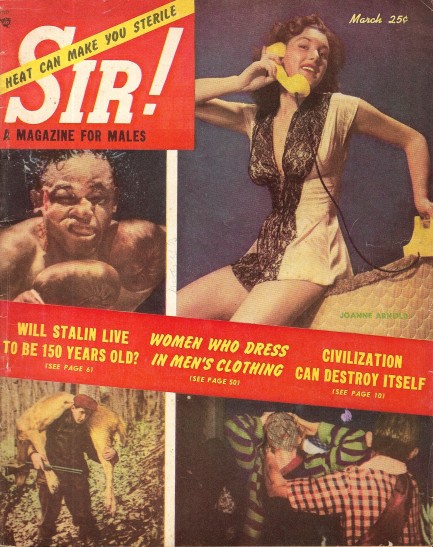
Above is the cover of a March 1953 issue of Sir! magazine, and in an example of the ephemeral nature of such items, shortly after we scanned this we spilled a glass of red wine on it. So behold! It's even more rare than it was when we bought it. Above the slash you see boxer Kid Gavilan, he of the famed bolo punch, and on the right is model Joanne Arnold, who we've featured before here, here, and here. She doesn't appear inside. But what you do get is a jaunt through such exotic locales as Melanesia, Tahiti, and Lisbon in search of knowledge and thrills.
We were drawn to the Lisbon story, which the magazine describes as a capital of sin. To us the word “sin” means late nights, good intoxicants, fun women, and excellent entertainment. To Sir! it means being cheated, robbed, framed, and arrested. To-may-to to-mah-to, we guess. We've spent some time in Lisbon and we love it. We don't know what it was like in 1953, but Europe was still coming out of World War II, which means many countries—even non-combatants like Portugal—were wracked by poverty. So we wouldn't be surprised if thieves were out in droves.
Elsewhere inside Sir! you get art from Jon Laurell and Joseph Szokoli, photos of model Jean Williams and Tahitian beauty queen Malie Haulani, a story on the danger of nuclear weapons, anthropological snobbery in exposés about New Caledonia and the Kogi people of Colombia, and fanciful theories about Russian scientists working to keep Josef Stalin alive for 150 years—which didn't work, because he died a mere five days after this issue of Sir! hit the newsstands. Clearly, the magazine is cursed. It certainly cursed our wine glass. We have thirty-five scans below for your enjoyment and other issues of Sir! here and here.
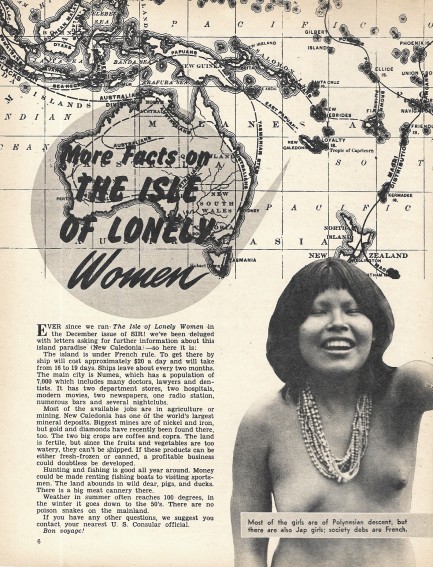 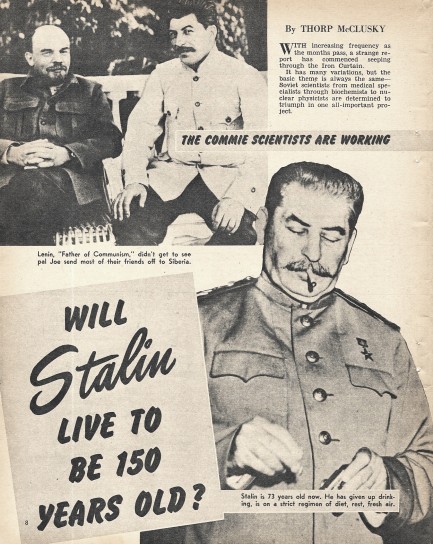   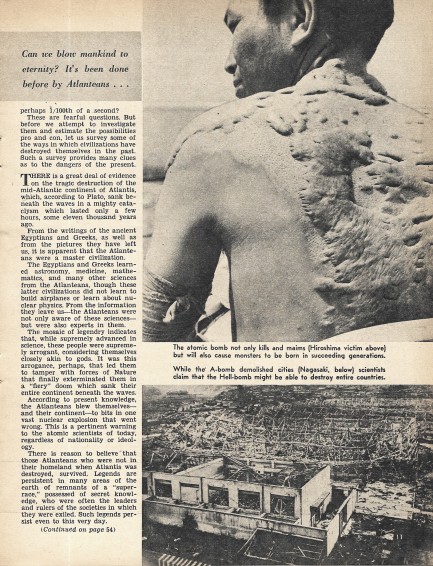 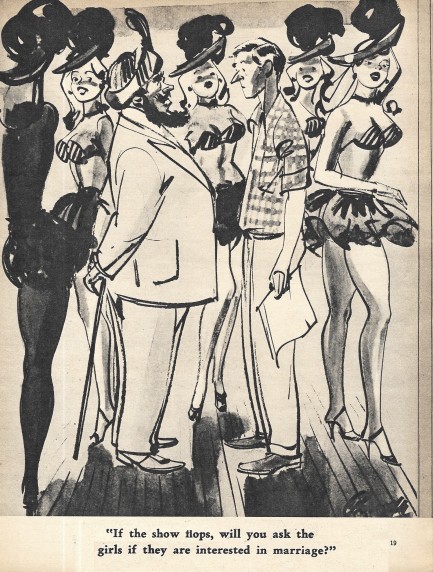 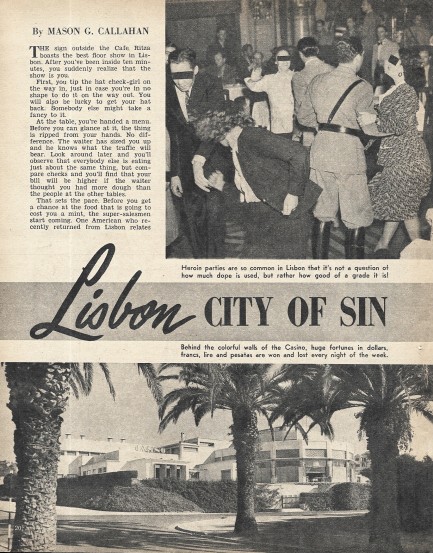 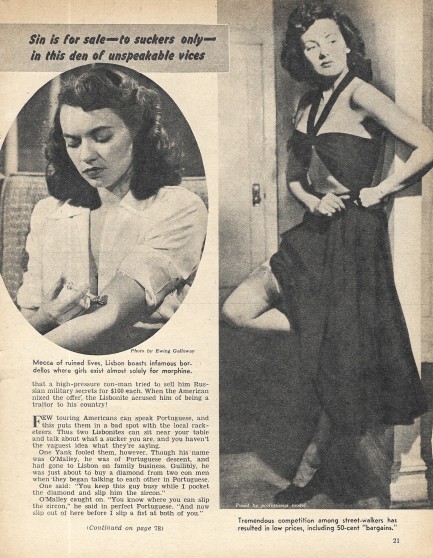 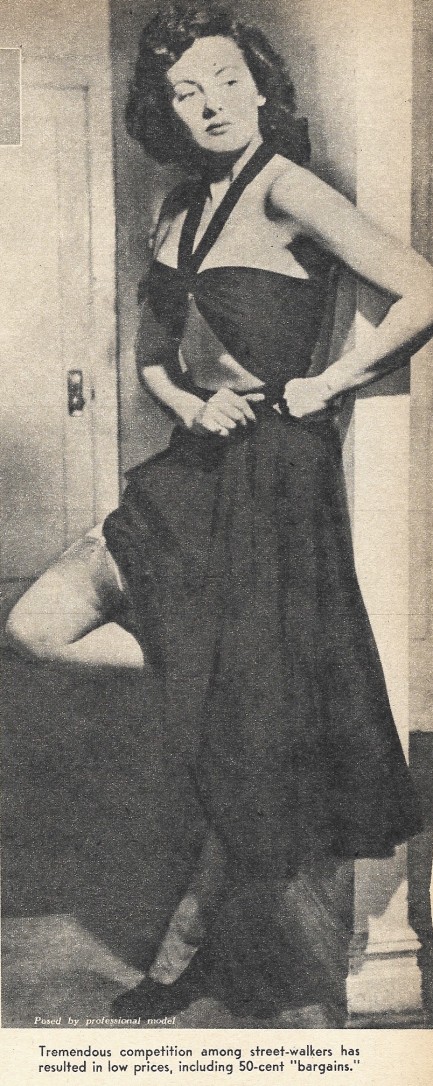 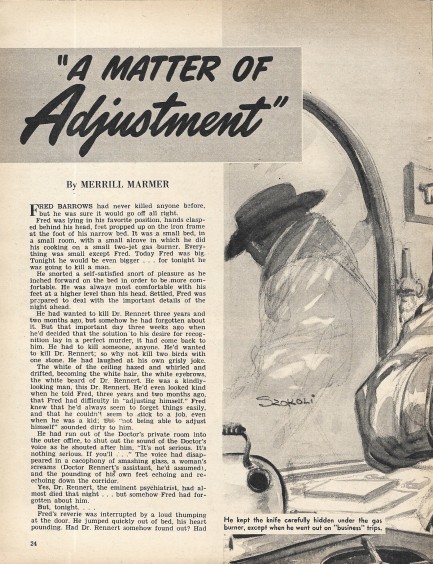 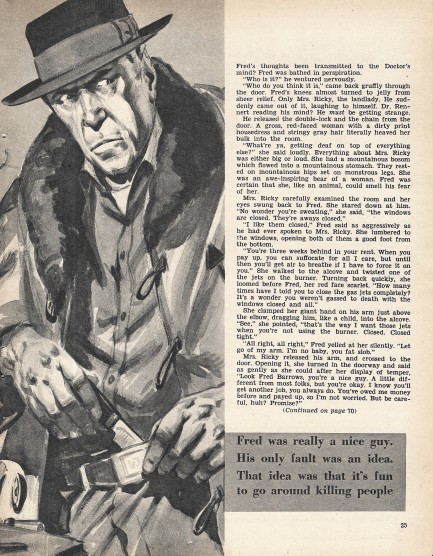 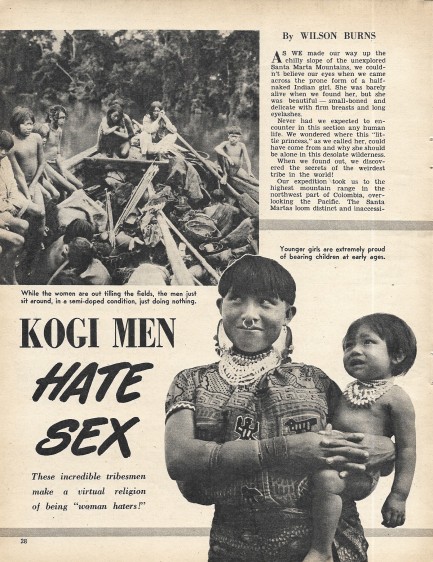 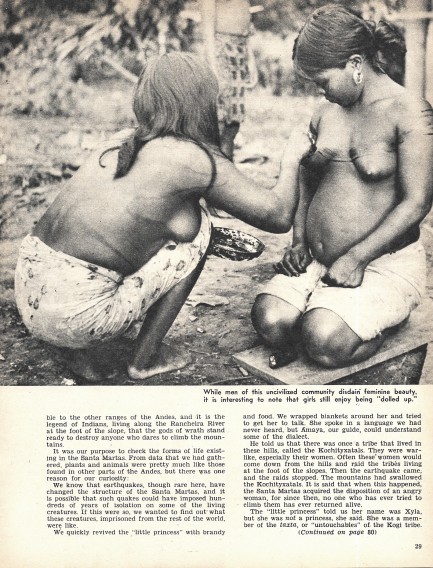 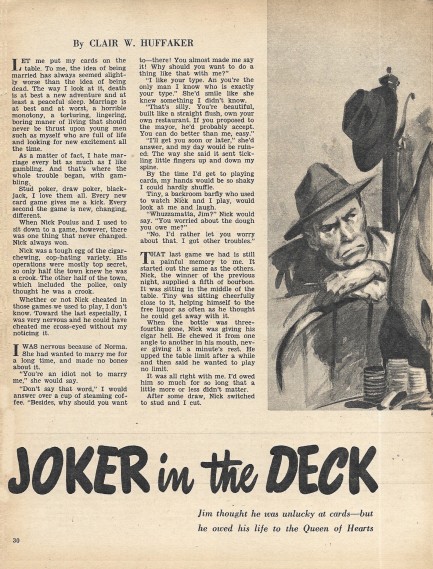 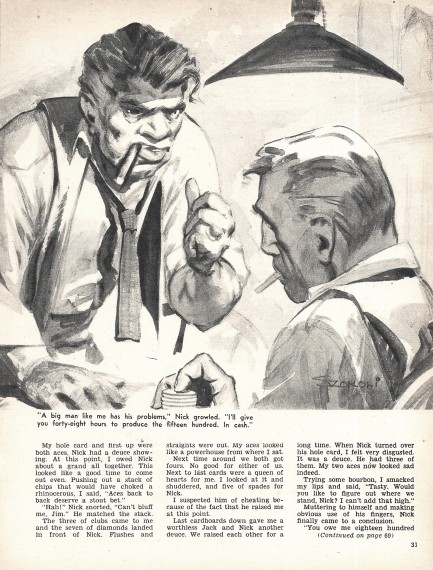 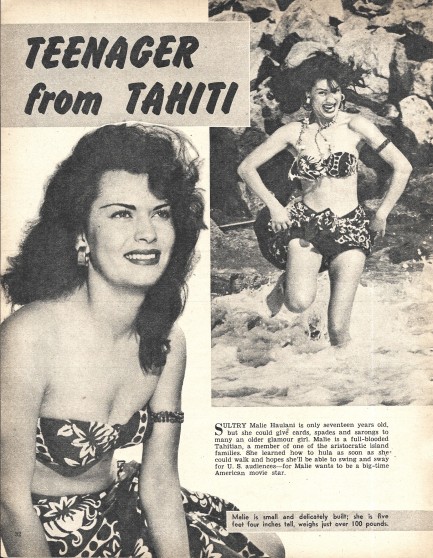 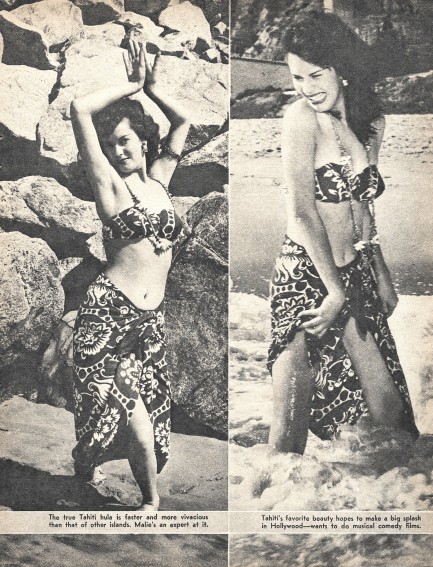 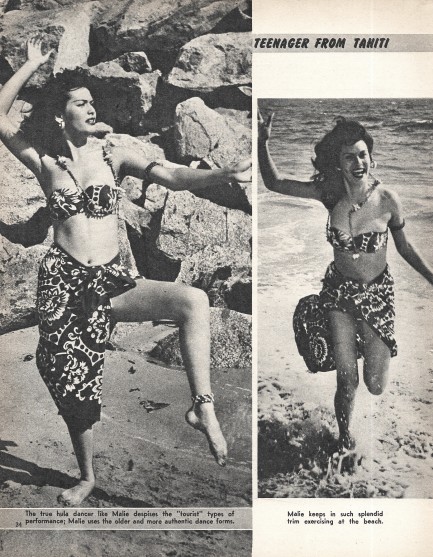 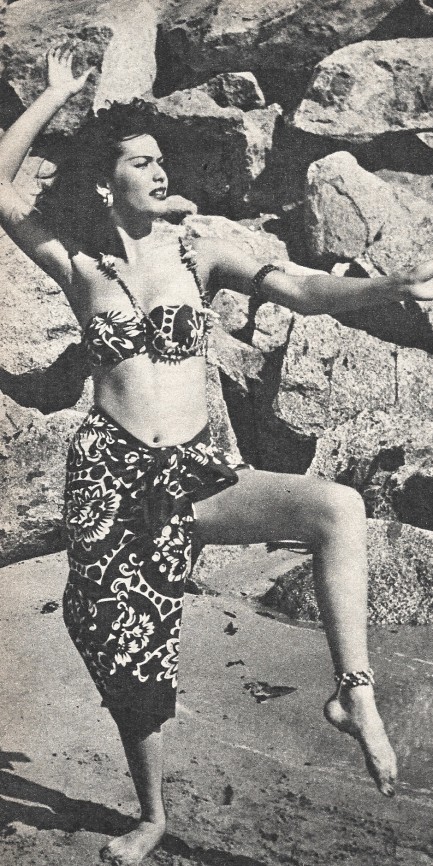 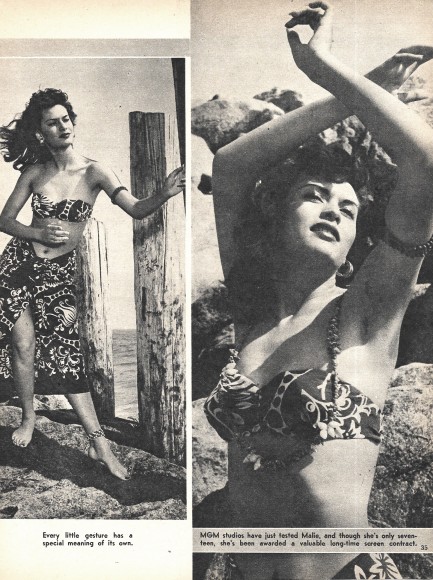 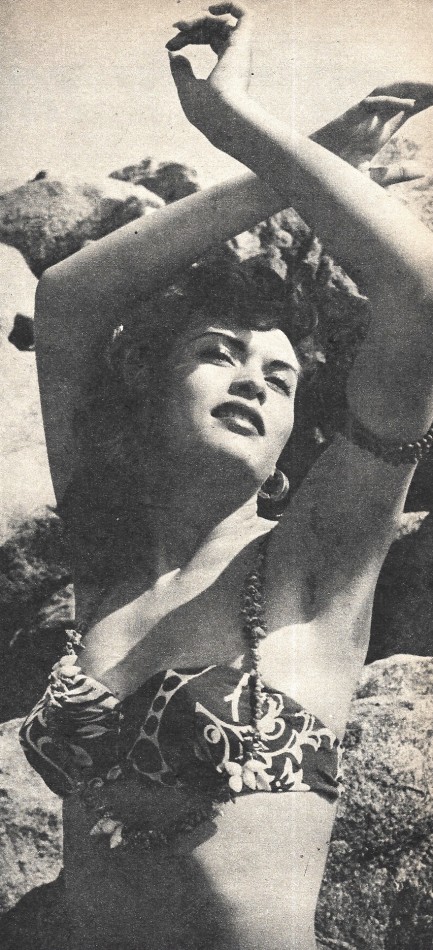 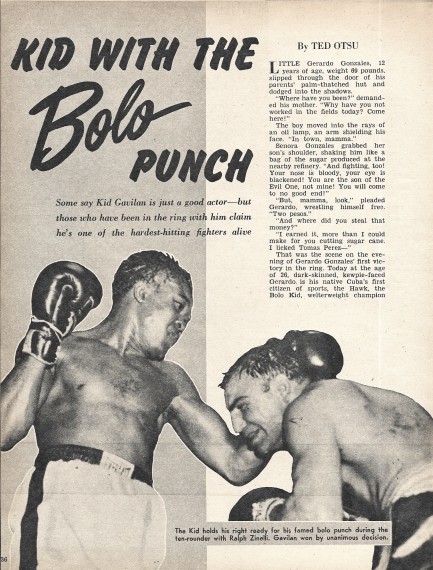 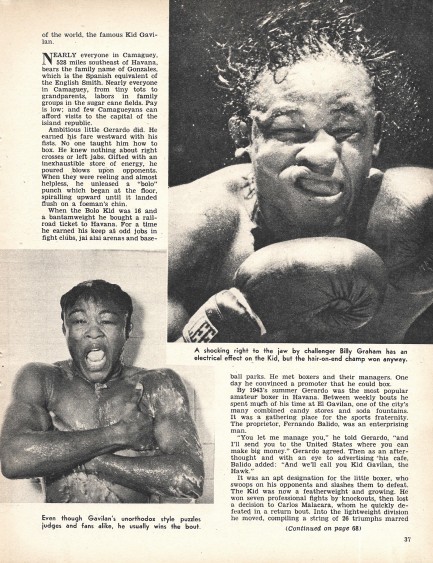  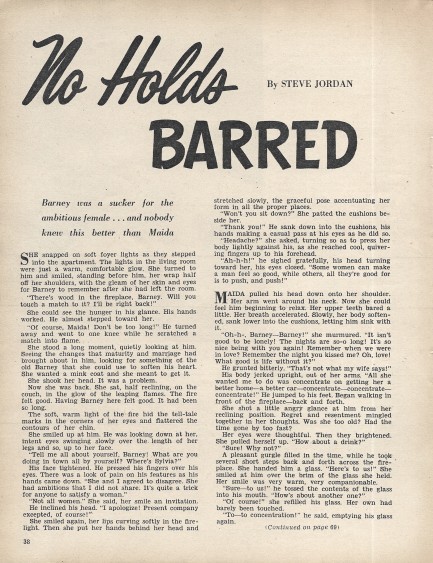 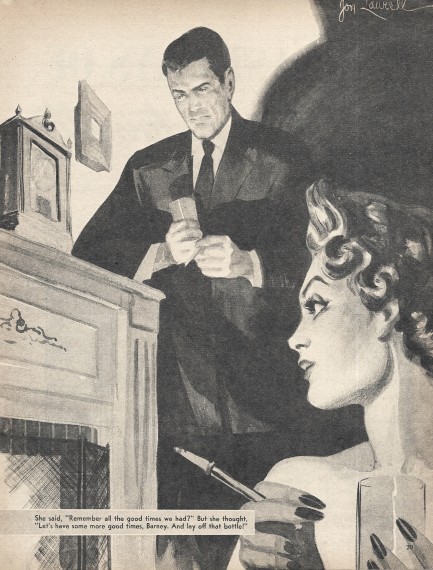 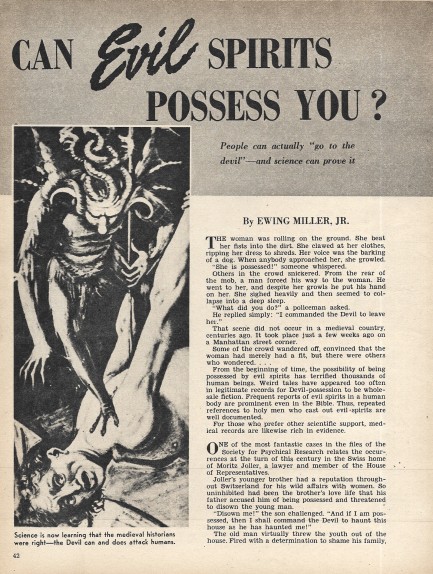 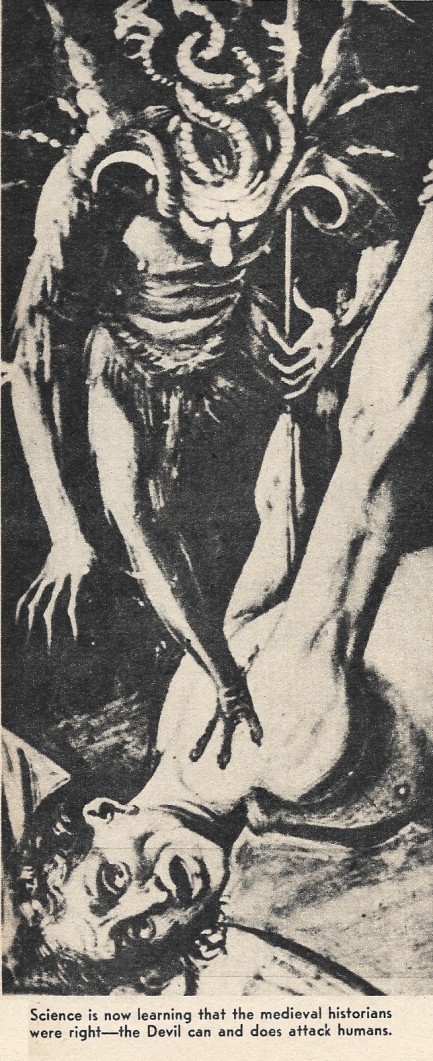 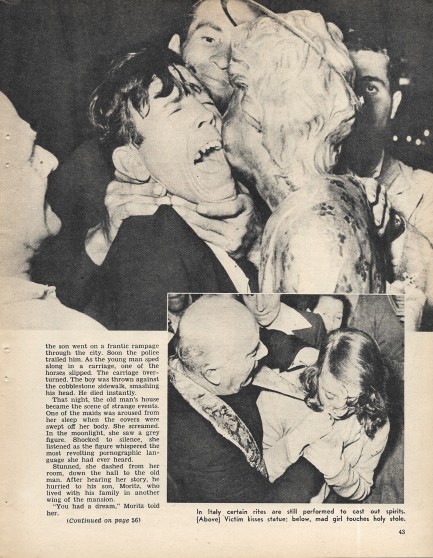 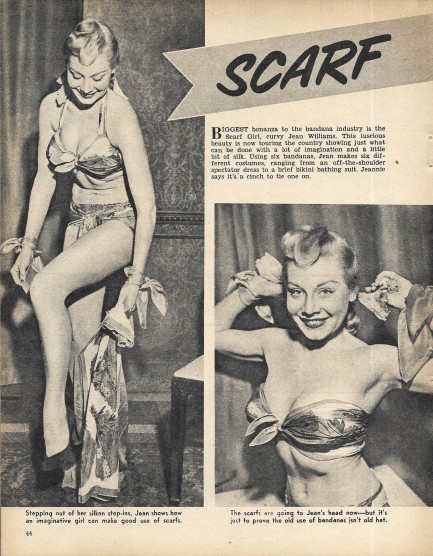 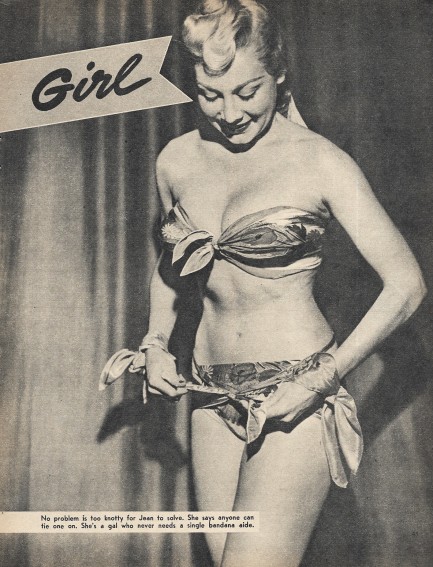 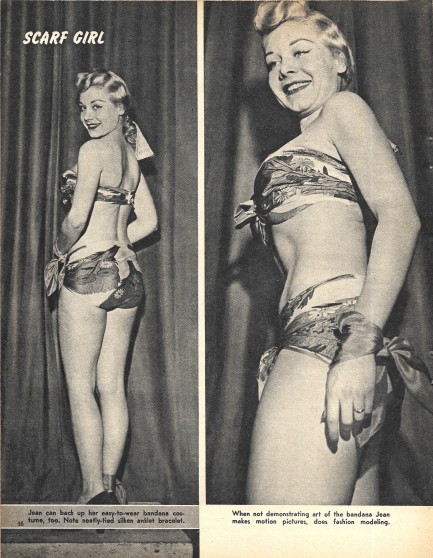 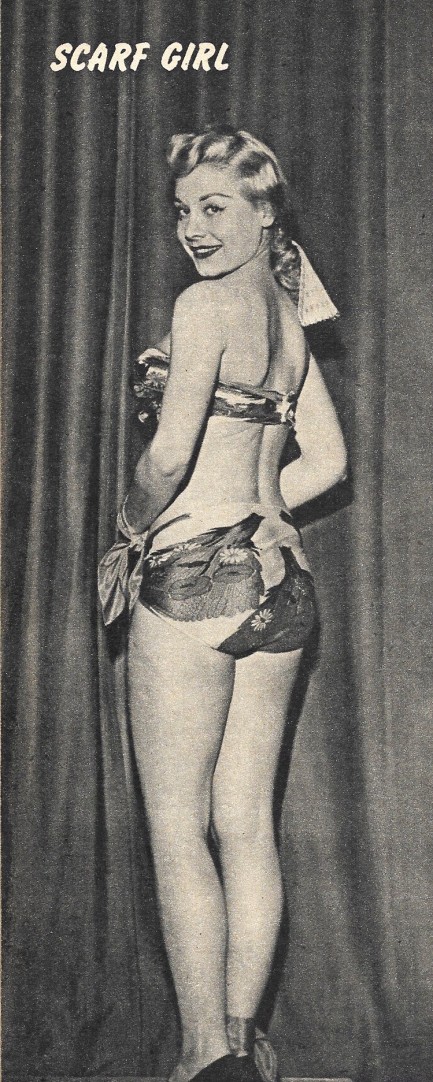 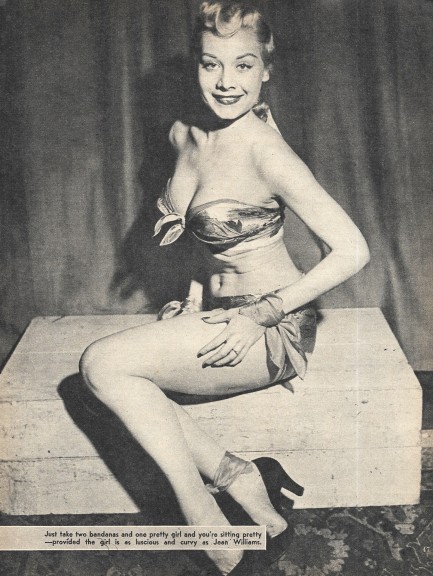 
 It's not an N95 mask but it's all I've got. 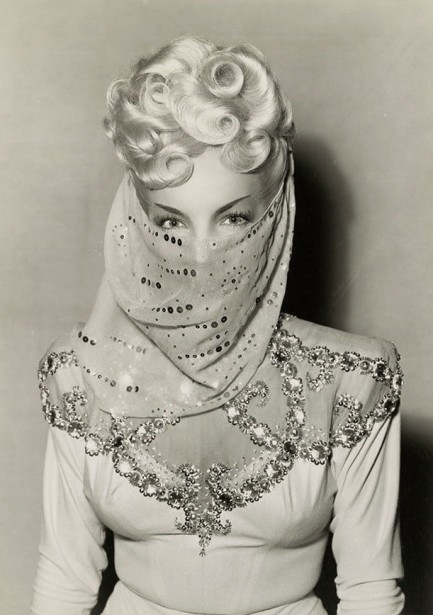
Visual references change. This is obviously a veil, but when we saw it the first thing that came to mind was mask. It's an elegant, somewhat erotic shot, which is no wonder, as veils are generally seen as sexy. Masks, meanwhile, are not, but might that change? There's already mask porn. Doesn't do anything for us, but maybe we're just not cutting edge enough. Anyway, this rare photo was made to promote the 1947 Groucho Marx comedy Copacabana, and the face behind the veil is that of legendary Portuguese-born Brazilian singer Carmen Miranda. We know what you're thinking. This can't be Carmen Miranda. But it is. In the film she's trying to hide her identity, which is why she's made-up so pale and is wearing a blonde wig. Her ruse worked, and not just in Copacabana—websites have misidentified this shot as everyone from Chili Williams to Lili St. Cyr.
 What's the most important Carnival accessory? Anonymity. 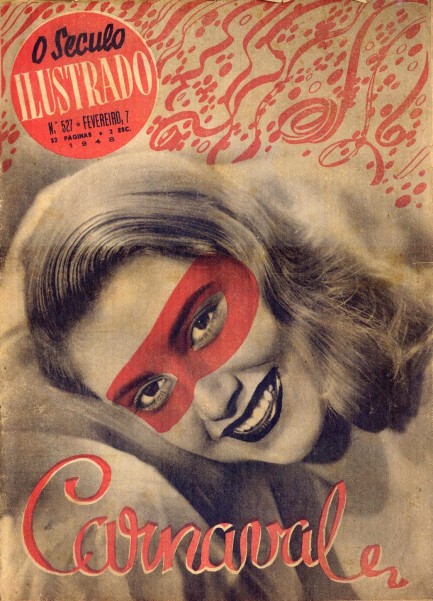
Who is this masked woman? We don't know, because she doesn't get credit for her appearance on this Rio carnival themed cover of O Seculo Ilustrado published today in 1948, but what a great image. A little anonymity is just the thing carnival goers need. We know because we've been to Rio during that raucous holiday and we can tell you plenty of people are simply not themselves. This is a beautiful photo-illustration, even frame-worthy, we'd say. Which is actually possible, since the original scan of this is more than 1100 pixels wide thanks to the Wordpress blog Ilustração Portugueza. Get your own while the page is up. It's been idle for a while and could, as blogs are wont to do, disappear anytime.
 Television makes a celebrity of a natural born Kira. 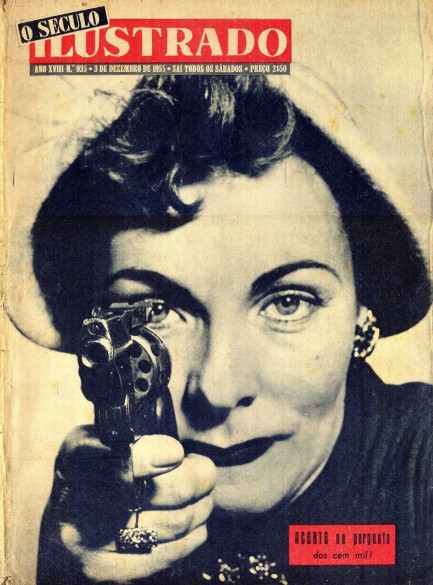
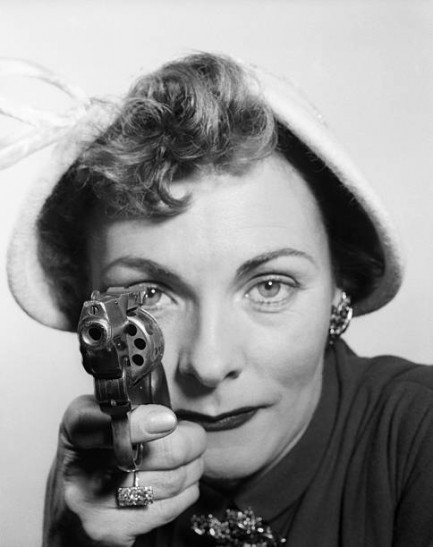 Above is another cover of the Portuguese magazine O Século Ilustrado, this time with a non-Hollywood face. She's Kira Shirk, who gained fame when Europe learned she had been a sniper in the Russian infantry during World War II's Battle of Leningrad. The magazine explains that she's appearing on NBC's Big Surprise, a game show that culminated in a high pressure question worth $100,000 if the contestant answered it correctly. Shirk had pledged to donate part of her winnings to an organization called Crusade for Freedom. Did she win? No idea, but her question was supposed to be about weapons and war, so we're going with yes. Great image, published today in 1955. More here. Above is another cover of the Portuguese magazine O Século Ilustrado, this time with a non-Hollywood face. She's Kira Shirk, who gained fame when Europe learned she had been a sniper in the Russian infantry during World War II's Battle of Leningrad. The magazine explains that she's appearing on NBC's Big Surprise, a game show that culminated in a high pressure question worth $100,000 if the contestant answered it correctly. Shirk had pledged to donate part of her winnings to an organization called Crusade for Freedom. Did she win? No idea, but her question was supposed to be about weapons and war, so we're going with yes. Great image, published today in 1955. More here.

|
 |

The headlines that mattered yesteryear.
2003—Hope Dies
Film legend Bob Hope dies of pneumonia two months after celebrating his 100th birthday. 1945—Churchill Given the Sack
In spite of admiring Winston Churchill as a great wartime leader, Britons elect
Clement Attlee the nation's new prime minister in a sweeping victory for the Labour Party over the Conservatives. 1952—Evita Peron Dies
Eva Duarte de Peron, aka Evita, wife of the president of the Argentine Republic, dies from cancer at age 33. Evita had brought the working classes into a position of political power never witnessed before, but was hated by the nation's powerful military class. She is lain to rest in Milan, Italy in a secret grave under a nun's name, but is eventually returned to Argentina for reburial beside her husband in 1974. 1943—Mussolini Calls It Quits
Italian dictator Benito Mussolini steps down as head of the armed forces and the government. It soon becomes clear that Il Duce did not relinquish power voluntarily, but was forced to resign after former Fascist colleagues turned against him. He is later installed by Germany as leader of the Italian Social Republic in the north of the country, but is killed by partisans in 1945.
|

|
|

It's easy. We have an uploader that makes it a snap. Use it to submit your art, text, header, and subhead. Your post can be funny, serious, or anything in between, as long as it's vintage pulp. You'll get a byline and experience the fleeting pride of free authorship. We'll edit your post for typos, but the rest is up to you. Click here to give us your best shot.

|
|




























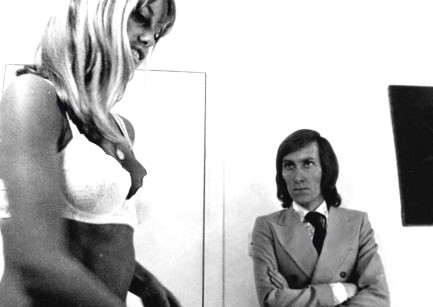

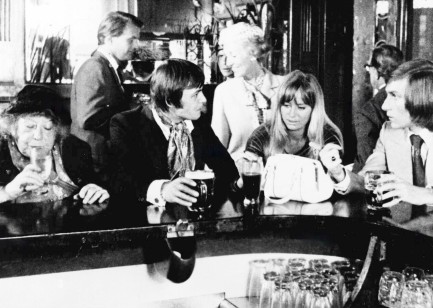





































































































 Above is another cover of the Portuguese magazine O Século Ilustrado, this time with a non-Hollywood face. She's Kira Shirk, who gained fame when Europe learned she had been a sniper in the Russian infantry during World War II's Battle of Leningrad. The magazine explains that she's appearing on NBC's Big Surprise, a game show that culminated in a high pressure question worth $100,000 if the contestant answered it correctly. Shirk had pledged to donate part of her winnings to an organization called Crusade for Freedom. Did she win? No idea, but her question was supposed to be about weapons and war, so we're going with yes. Great image, published today in 1955. More here.
Above is another cover of the Portuguese magazine O Século Ilustrado, this time with a non-Hollywood face. She's Kira Shirk, who gained fame when Europe learned she had been a sniper in the Russian infantry during World War II's Battle of Leningrad. The magazine explains that she's appearing on NBC's Big Surprise, a game show that culminated in a high pressure question worth $100,000 if the contestant answered it correctly. Shirk had pledged to donate part of her winnings to an organization called Crusade for Freedom. Did she win? No idea, but her question was supposed to be about weapons and war, so we're going with yes. Great image, published today in 1955. More here.




































































